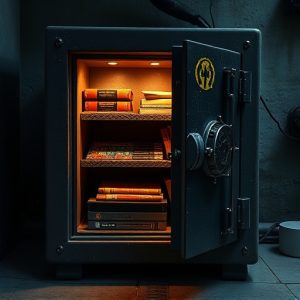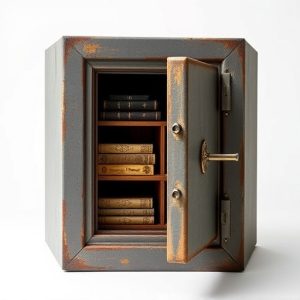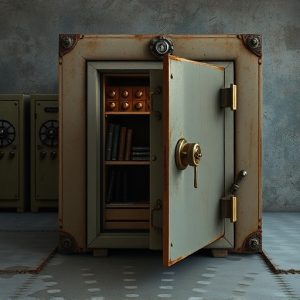Safes That Look Like Something Else: Unmasking Covert Storage for Cleaning Products
"Safes that look like something else" offer a creative and discreet way to hide valuable i…….
"Safes that look like something else" offer a creative and discreet way to hide valuable items within everyday household objects. These blended storage solutions provide both functionality and discretion, ideal for securing cash, documents, or emergency supplies. Incorporate them into books, plants, clocks, kitchen appliances, or fake cleaning products for strategic hiding places. Material selection, functional design, and ergonomic features enhance realism while ensuring secure access. However, legal and ethical considerations regarding privacy, property rights, and transparent marketing practices must be strictly observed when using these innovative storage solutions.
In today’s world, discretion is key. For those seeking secure storage solutions, safes that look like something else offer an innovative approach. This article explores the concept of covert storage, shedding light on how everyday household items can hide valuable possessions or even fake cleaning products. From understanding the mechanics to ethical considerations, we delve into the art of deception, providing insights on materials, design, and legal implications. Uncover the secrets behind these disguised safes and their growing popularity.
- Understanding Covert Storage: Unveiling the Concept
- The Appeal of Safes That Look Like Household Items
- Common Places to Hide Your Fake Cleaning Products
- Materials and Design Considerations for Successful Deception
- Legal Implications and Ethical Use of Covert Storage Solutions
Understanding Covert Storage: Unveiling the Concept
Covert storage, also known as hidden safes or disguised stashes, is a clever way to hide valuable items within everyday household objects. The concept revolves around integrating security seamlessly into ordinary items, such as books, plants, clocks, or even cleaning products, turning them into safe havens for precious possessions. These innovative designs offer a discreet and creative solution for those seeking secure storage without drawing attention.
The beauty of covert storage lies in its ability to blend functionality with discretion. Safes that look like something else allow individuals to keep their belongings hidden while maintaining an aesthetically pleasing environment. Whether it’s stashing cash, important documents, or even emergency supplies, these hidden compartments provide a sense of security and privacy, ensuring that only the owner has access to their valuable items.
The Appeal of Safes That Look Like Household Items
In today’s world, where security concerns are ever-present, many individuals seek discreet and innovative solutions to protect their valuable items. This is where safes that look like something else have gained immense popularity. These cleverly designed storage devices offer an appealing alternative to traditional safes, blending seamlessly into everyday household items. By disguising themselves as common objects like books, fire extinguishers, or even kitchen appliances, they provide a sense of security and privacy, ensuring sensitive possessions remain hidden from prying eyes.
The appeal lies in their ability to offer both functionality and discretion. Safes that look like something else allow homeowners to keep their valuables close at hand while maintaining a normal appearance. Whether it’s storing important documents, jewelry, or even emergency funds, these versatile items provide peace of mind, knowing your treasures are secure without compromising the aesthetic of your living space.
Common Places to Hide Your Fake Cleaning Products
When creating a covert storage system for fake household cleaning products, it’s essential to think outside the box and utilize everyday items or spaces that appear innocuous at first glance. One effective strategy is to incorporate safes that look like something else into your home decor. For instance, consider a replica of an old-fashioned book with a secret compartment where you can stash your fake cleaning supplies. Similarly, wall art pieces, such as paintings or sculptures, can conceal hidden compartments designed to fit various cleaning tools and products.
Other common places include kitchen and bathroom cabinets that double as decoy storage areas. You might also hide your fakes within real-looking food containers in your pantry, or use fake plants with removable pots that reveal a stashed compartment. Bedrooms offer opportunities with items like decorative pillows or stuffed animals that could conceal small safes, while laundry hampers and under-the-bed storage boxes are less suspect when filled with what appears to be clean linens or clothes.
Materials and Design Considerations for Successful Deception
When designing a covert storage fake household cleaning product, or creating a safe that looks like something else, material selection is paramount. The items chosen should be non-suspicious and easily integrated into everyday household objects. For instance, utilizing plastic or metal containers shaped like common cleaning supplies—like bleach or detergent bottles—can provide an effective disguise. These materials are lightweight, easy to mold, and can be painted or labeled to mimic authentic products, ensuring a realistic appearance.
Additionally, consider the design’s functionality. The safe should not only resemble a genuine cleaning product but also allow for discreet access and storage. This might involve incorporating hidden compartments or latches that are virtually invisible yet secure. Ergonomic designs that align with their supposed purpose can further enhance the deception. For example, adding a handle to a fake bottle makes it more believable as a real household item while providing easy access for the user.
Legal Implications and Ethical Use of Covert Storage Solutions
The use of covert storage solutions, particularly safes that look like everyday household items, raises a range of legal and ethical considerations. While these devices can offer a level of security for valuable items or sensitive documents, their implementation must adhere to local laws regarding privacy and property rights. In many jurisdictions, concealing objects in a manner that deceives or surprises others is considered unlawful, especially if it involves the storage of illicit substances or contraband.
Ethically, the use of hidden safes should be approached with caution. It’s essential to respect the privacy and security concerns of neighbors and family members who might be affected by the presence of such devices. The legitimate need for covert storage should never override the rights and trust of others. Additionally, manufacturers and retailers of these products have a responsibility to ensure their marketing and sales practices are transparent, avoiding any suggestion of unethical or illegal use.
In conclusion, the concept of covert storage through safe products that resemble everyday household items offers a creative solution for discreetly securing valuable possessions or, as discussed, fake cleaning supplies. By understanding the principles behind this unique approach to security, individuals can make informed decisions when selecting appropriate safes that align with their needs. However, it’s crucial to remember that while these innovative products provide an extra layer of protection, they should be used ethically and in compliance with local laws, ensuring a safe and responsible environment for all.


